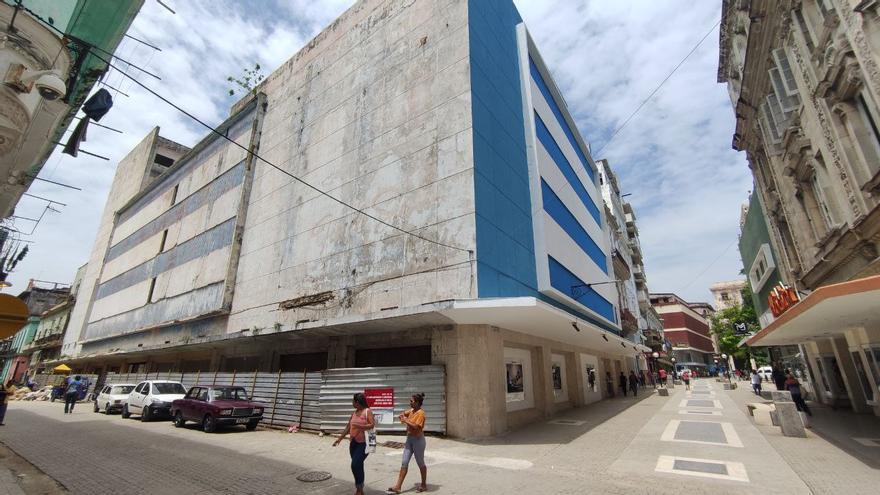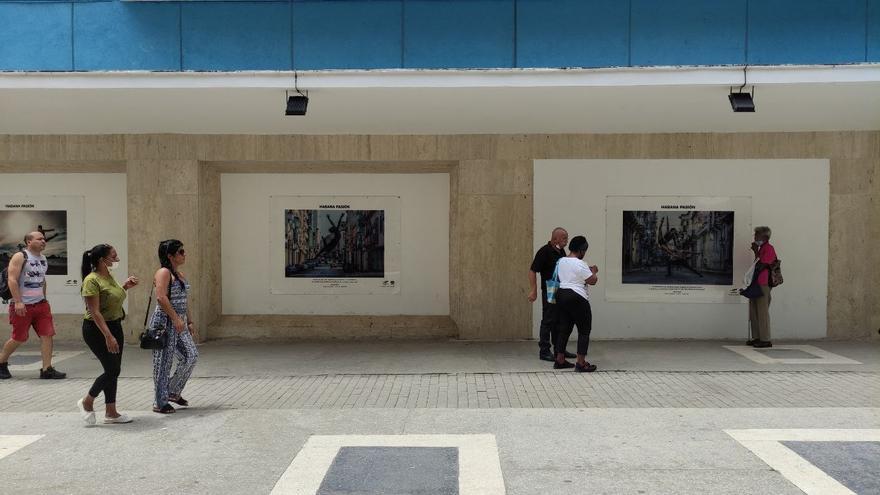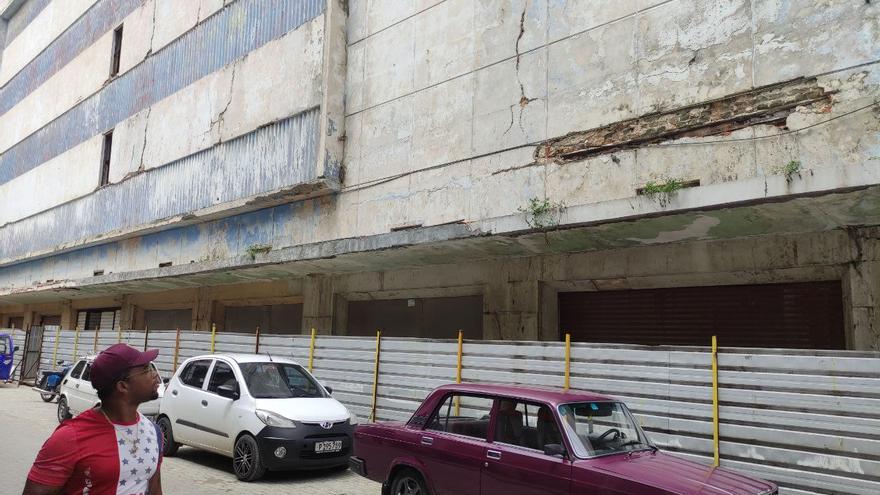
![]() 14ymedio, Juan Diego Rodriguez, Havana, June 20, 2022 — Surrounded by a metal fence and piles of rubble, work on Havana’s Fin de Siglo department store seems to be all about concealment rather than repair. To keep curious onlookers from witnessing the full magnitude of the historic building’s slow destruction, authorities have opted to hide it from public view.
14ymedio, Juan Diego Rodriguez, Havana, June 20, 2022 — Surrounded by a metal fence and piles of rubble, work on Havana’s Fin de Siglo department store seems to be all about concealment rather than repair. To keep curious onlookers from witnessing the full magnitude of the historic building’s slow destruction, authorities have opted to hide it from public view.
“It’s been like this for years and now it’s become a dump,” laments a neighbor waiting in line on Saturday at a nearby pizzeria. “They came and put up these metal sheets one day. Af first we thought they were going to repair the building but that’s not at all the case. They’ve just let if fall apart, and with so many homeless families in this area.”
Fin de Siglo was no ordinary store. The famous emporium was opened in 1897 at the corner of San Rafael and Galiano streets in central Havana. Born of the efforts of four entrepreneurs from Galicia, it was considered the first of its kind in the Spanish-speaking world. A renovation in the mid-20th century added air conditioning throughout the building, wide escalators and large display windows at street level.

Those large expanses of glass and the stylized mannequins behind them are long gone. Area residents now dump bags of garbage into the space between the fence and the wall that once featured display windows. Parts of the concrete canopy are missing and the store’s cursive, vaguely calligraphic metal signage is barely distinguishable from the grimy, rusty walls.
With its sleek, modern facade and marble-clad ground floor, the building marked a milestone in design for the area. But neither the diligence of its architects nor the durability of its materials could ultimately save it once it was nationalized in 1960. From then on, merchandise began disappearing from its shelves. Goods were rationed and a new distribution system was imposed. Without investment, or new paint, the structure gradually deteriorated.
But Fin de Siglo’s greatest humiliation came during the crisis of the 1990s. During the Special Period it served as a retail outlet that catered to newlyweds, who could find goods there that were no longer available at other stores. Unlike in the 1980s, however, the merchandise was of low quality and questionable use.

“After we got married, my wife and I spent days waiting in line to get in and all we could find were plastic containers for gasoline and a funnel. But neither she nor I had a car,” says Ricardo. The retiree had been living for years with the woman who would become his wife when they decided to legalize their relationship. Being married would allow them to buy goods they could later resell on the black market. “What hit me when I went into Fin de Siglo was the darkness and dank smell, nothing at all like it was when I was a kid.”
Now Ricardo avoids even going near the metal fence. “The stench from inside the building combined with the garbage that isn’t picked up for weeks would depress anyone,” he explains. A hundred years ago, jewels shone inside its display cases, employees shuffled about, showing off new merchandise, and dozens of Galician eyes watched over the store, making sure it continued to make money and please its customers. But that was long ago. We are now in a different era and that store no longer exists.
____________
COLLABORATE WITH OUR WORK: The 14ymedio team is committed to practicing serious journalism that reflects Cuba’s reality in all its depth. Thank you for joining us on this long journey. We invite you to continue supporting us by becoming a member of 14ymedio now. Together we can continue transforming journalism in Cuba.
